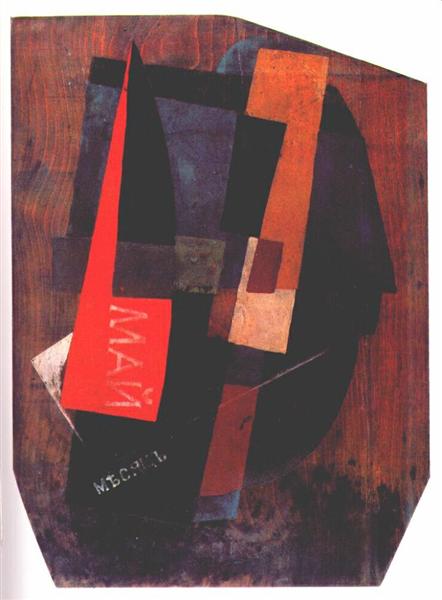Description
In 1916, Vladimir Tatlin, one of the most prominent Russian artists of the twentieth century and a precursor to abstract art in his country, gave us the piece entitled "Composition (the month of May)". This work is an early manifestation of its exploration in the field of constructivism, a movement that would emerge more significantly years later, influenced by revolutionary ideals and a desire to embrace technological modernity.
When observing "composition (the month of May)", one is immediately immersed in an atmosphere of dynamism and transformation, characterized by the amalgam of shapes, lines and colors. The work, which lacks human figures or any figurative reference, is presented as a pure expression of geometry and visual lyric. The contrast between the primary colors, especially the predominant use of yellow, red and black, creates a visual symphony that causes the viewer to interpret its internal structure.
Tatlin uses a technique that, although it may seem chaotic in a superficial inspection, reveals a meticulous organization and a calculated balance between its elements. Rectangular geometric figures and diagonal lines seem to challenge the perception of space and gravity, suggesting constant tension and movement. This form of abstraction is not merely decorative; It implies a connection with the new ideas of the artistic avant -garde of the early twentieth century, where the artistic object became an entity itself, without the need to reference the outside world.
Color plays a crucial role in this work. The choice of vibrant tones and their disposition on the canvas create a visual vibration that evokes the awakening of spring, a fruitful rebirth that complements the title of the painting. The absence of shadows and volumes gives forms an ethereal, almost floating quality, underlining Tatlin's aspiration to transcend the limitations imposed by traditional three -dimensional representation.
One cannot speak of Tatlin without mentioning his fundamental contribution to the development of constructivism, a movement that he himself helped to define and focused on the fusion of art with industry and functionality. In "Composition (the month of May)" we observe the dawn of this approach, where the artistic object could be interpreted as a mechanism in itself, a piece of a machinery of greater complexity.
It is relevant to contextualize this work within the tumultuous period in which it was created, marked by World War I and the imminent outbreak of the Russian revolution. Tatlin and his contemporaries sought new forms of expression to resonate with the urgency of their time, and this painting is a reflection of that search. It invites us to think about the ability of the art to reinvent himself and the role of the artist as an agent of change.
Thus, "composition (the month of May)" is not simply an abstract art piece; It is a testament of the struggle for a new way of seeing and understanding the world. Vladimir Tatlin, with his innovative vision and his tireless search for new forms of expression, reminds us that art is a field of infinite possibilities, a constant conversation between the real and the imagined.
KUADROS ©, a famous paint on your wall.
Hand-made oil painting reproductions, with the quality of professional artists and the distinctive seal of KUADROS ©.
Art reproduction service with satisfaction guarantee. If you are not completely satisfied with the replica of your painting, we refund your money 100%.

